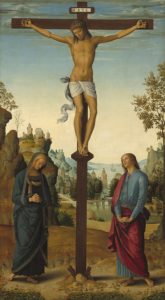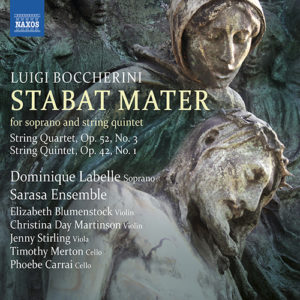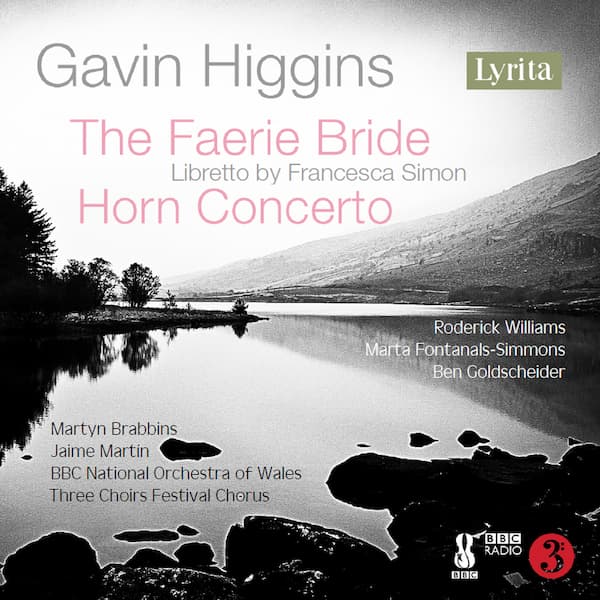
Pietro Perugino: The Crucifixion with the Virgin, Saint John, Saint Jerome, and Saint Mary Magdalene (1482) (National Gallery of Art, Washington)
Jacopo da Todi’s meditation on the emotions of Mary at the crucifixion of her son have inspired composers for centuries. The Stabat Mater, written in the 13th century, has been set by composers from the 15th century to the 21st, including William Cornysh, Josquin des Prez, Palestrina, Vivaldi, Domenico and Alessandro Scarlatti, Pergolesi, Haydn, Schubert, Giuseppe Tartini, Rossini, Antonín Dvořák, Verdi, Karol Szymanowski, Poulenc, Charles Villiers Stanford, Arvo Pärt, Paul Mealor, and James MacmIllan.
Although originally thought to have been written by Jacopo da Todi (ca. 1230-1306), the text may have predated him. However, by the 14th century, it was well-known in Europe. It was added to the Mass in the late 15th century, and then removed from the Mass by the Council of Trent in the mid-16th century. Pope Benedict XIII brought it back in 1727 and it remains now in the modern hymnals. Between 1700 and 1883, there are an estimated 100 settings of the text.
The poem, ‘Stabat mater dolorosa’ (Sorrowfully His Mother Stood), has some 20 verses of three lines apiece in an A-A-B rhyme, with 8-8-7 syllables per line:
Stabat mater dolorósa | The sorrowful mother stood |
juxta Crucem lacrimósa, | Beside the cross, weeping, |
dum pendébat Fílius. | Where her Son was hanging. |

One of the most famous settings of the 18th century was that by Giovanni Pergolesi, who joined other 18th century composers such as Vivaldi, Scarlatti, and Haydn. Luigi Boccherini (1743-1805) first set the text in 1781 for an unknown occasion. At the time, he was in the employ of the Infante Don Luis in Spain. His first version was for soprano solo and was later revised for three voices in 1800.
The 1781 solo version may have been written for his wife, the soprano Clementina Pelicho. In all the previous versions of the Stabat mater, none were for solo voice and in creating this very intimate chamber music setting of a soprano and string quintet, he captured Mary’s darkest hour better than a choir or set of soloists could. Here, the emphasis is moved from the well-known poetry to the meaning of the poetry itself.
In creating this work for solo voice, rather than ensemble, Boccherini was able to use the flexibility of a single voice to add florid vocal ornamentation and even add improvised short cadenzas to what is already a technically demanding part. The voice frequently interacts with the first violin. The final verse, Quando corpus morierur, brings us to a breath taking conclusion of this song of sorrow and mourning.
Boccherini: Stabat mater, G. 532 (1781 version): Quando Corpus morietur (Dominique Labelle, soprano; Sarasa Ensemble)
Quando corpus moriétur, | When my body dies, |
fac, ut ánimæ donétur | let my soul be given |
paradísi glória. Amen | the glory of paradise. Amen |
By the end of the work, the poet is no longer describing Mary’s sorrow, but has inserted himself into the narrative, declaring that he, too, should follow Christ and be defended, to the end, by Mary. It’s a beautiful work, albeit not as well-known as it should be.

Boccherini: Stabat mater, G. 532
Performed by
Dominique Labelle
Sarasa Ensemble
Official Website




Gut geschrieben. Echt toll. Danke.